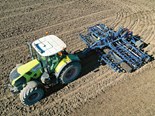Test: Hustler LX104
Regardless of where in the country you are, for farmers, feeding out is in full swing. So what better time to test the new MINT edition Chainless LX104 from Hustler.
Chainless feeders have been around since the late 1990s when Hustler’s original Chainless 2000 was introduced, proving so popular it has since been shipped around the world. New Zealand farmers are spoilt for choice when it comes to bale feeders, so I guess the questions needing to be asked are: What is a Chainless? Why would you buy a Chainless And is it worth the price premium?
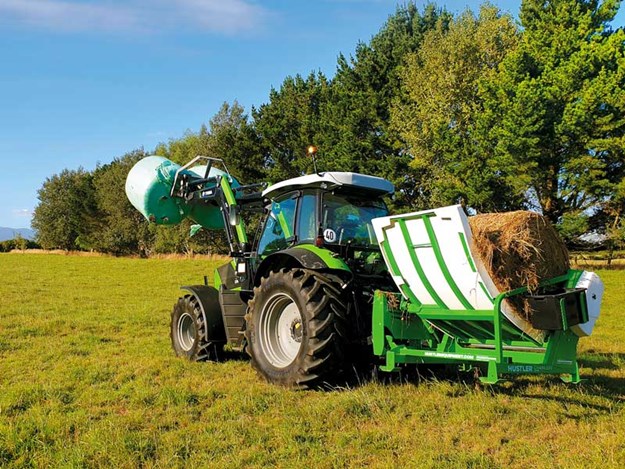 |
|
Power Farming Taranaki kindly supplied the Hustler bale feeder for our test under the shadow of Mount Taranaki
|
Let’s answer the first question. What is a Chainless feeder? As the name clearly suggests, it is indeed chainless. This means no more oiling chains, wearing drive sprockets, bent slats or net wrap wrapped around every nook and cranny.
The additional benefit of the double rotor design allows the bale to be teased out, rather than feeding it faster by simply increasing the chain speed on a traditional feeder.
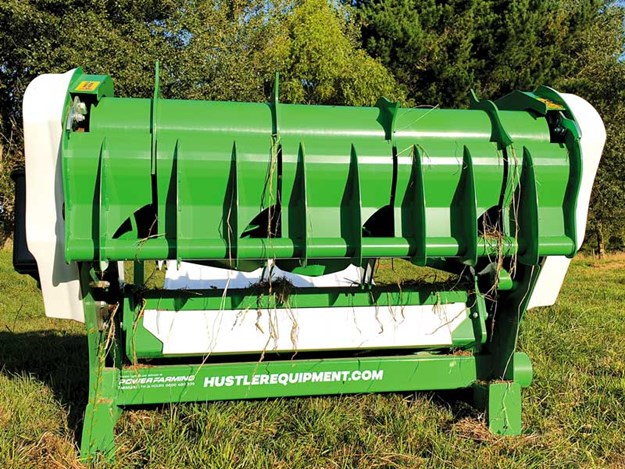 |
|
The EasyClean wiper keeps stringy material from wrapping around the feeding rotors
|
The teasing effect is well designed and beautiful to watch. It works with the top rotor spinning three times faster than the bottom rotor.
The bottom rotor benefits from both vertical and horizontal teeth, providing the drive for even the ugliest bales. Meanwhile, the top rotor only has vertical teeth. The EasyClean wiper minimises blockages and stops long stringy hay wrapping around the feeding rotors.
 |
|
The Hustler Chainless 2000 looks smart and is packed with smart design
|
This teasing effect also results in a nice fluffy row, a much more consistent feed pattern through various bale types; whether ugly silage bales, square bales, tight hay bales or loose straw bales.
Regardless of the fluffiness, in terms of aesthetics, this thin fluffy feed pattern means the cattle will waste less, as with big clumps of feed you are guaranteed spoilage from trampling and manure contamination.
Why would you buy a Chainless?
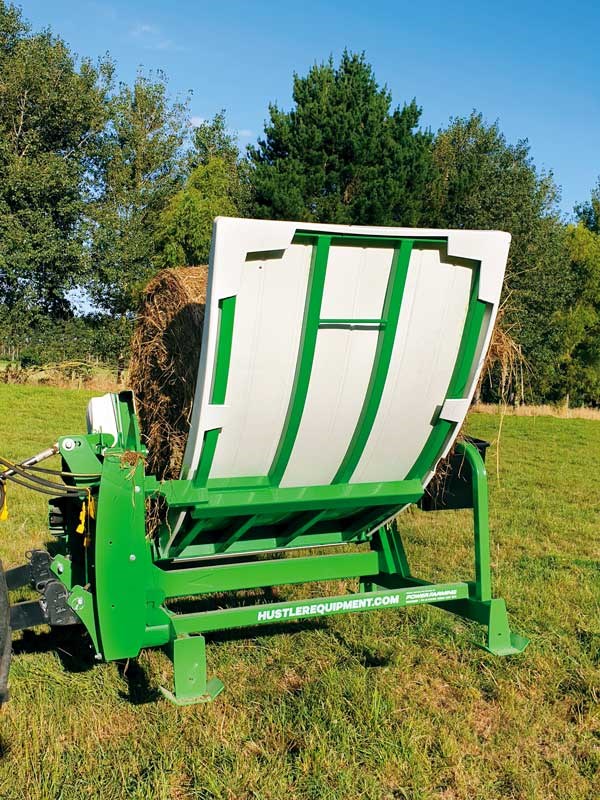 |
|
The large bale cradle handles both round and square bales with ease
|
The Chainless is a more complex feeder, both in terms of design and operation, because you need to manage both the bale cradle and the feeding rotor at the same time. With a normal chain feeder, you can feed from both sides, regardless of which way the bale is unrolling.
This of course is unless you’ve got a lot of time on your hands, like my fellow Farm Trader machinery tester and beef farmer extraordinaire Brent Lilley. Now Brent uses striped Tama net in his baler and then studies the pattern on the net wrap to figure out which way the bale will unravel on the bale feeder. Fortunately the Hustler Chainless can feed bales out if they’re loaded either way.
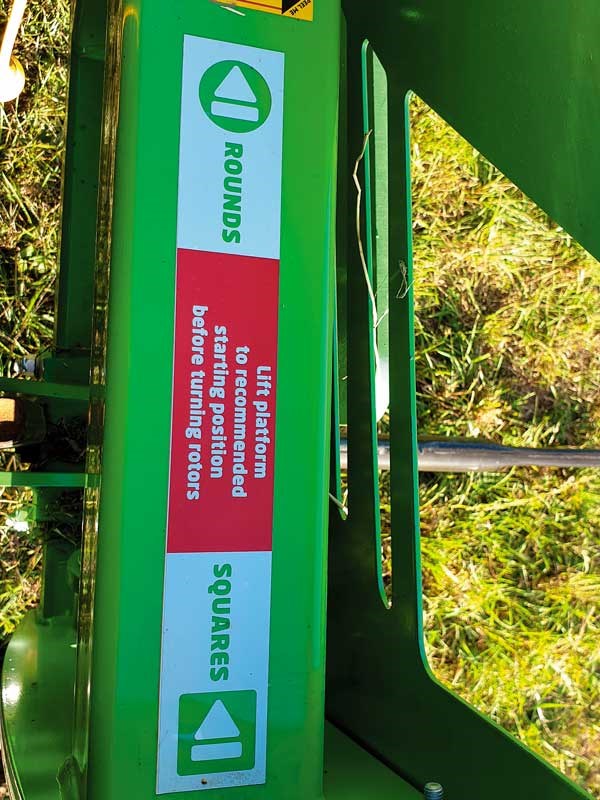 |
|
A clear and strong visual guide of where the cradle is ideally suited to start feeding
|
Having established that the Chainless is slightly more complex, this is because a number of things are happening at the same time. There is the table and the rotors, each on a separate hydraulic remote. Two remotes are needed for the feeder (one for the rotors and one for the cradle), but ideally to run a hydraulic toplink a third remote is required.
The table allows you to place the right amount of pressure on the bale to the teasing rotors, but if you bring it up too quickly, the bale can tip over the edge. However, if you had the chain feeder going too fast, and it caught the bale, the same thing could happen, so that’s not an indication of a design flaw on the Hustler Chainless.
 |
|
The hydraulic motor is well protected
|
During the test I fed a variety of fixed chamber and variable chamber round bales, as well as square hay bales. Each fed out slightly differently. As anyone who farms will be aware, each different type of bale has its own challenges, but none of these presented any issues or had the feeder struggling to cope.
Chamber
During the 20+ years evolution of the Chainless system, the chamber itself has become deeper. This means that the cradle can be brought up on a steeper angle for those ugly soft heavy silage bales, along with the unreal ability to tease biscuits out of square bales and the ability to feed variable chamber bales out continuously to the end. Even with a hard core.
There is an upgraded teeth design on the top roller, but I suspect the deeper cradle is where the secret lies. This means you can get the bale cradle angle to more than 90 degrees, which puts pressure on the bale core against the rotors, without holding it against the top rotor where it is at risk of being flipped off. I suspect this would make bales on steep country much easier and safer to feed out.
Headstock
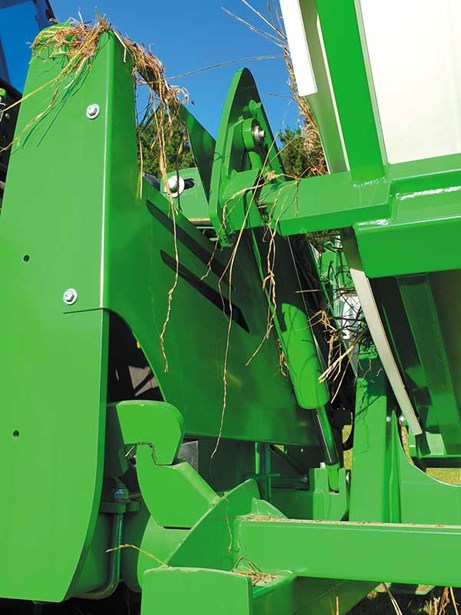 |
|
The Snaplock system works brilliantly
|
The headstock is another nifty innovation which impressed during testing. Hustler’s patented snaplock system means there are no ropes. As soon as the bale feeder is put on the ground, the latches unlock, and you can simply drive out without worrying about ropes pulling out of the back of a cab or dangling along the ground through mud before having to retrieve them. The system works really well and is an excellent example of practical solutions for everyday problems.
The compact headstock also has the integrated lifting mechanism for the cradle, which is easy to see from the cab when lining up for re-hitching. Speaking of re-hitching, the high tensile prongs are a breeze for loading round and square bales onto the cradle if you’re using a tractor with no loader. For rookie drivers like myself, one prong is longer than the other and the holes are much larger than the tine itself, allowing for easy lining up.
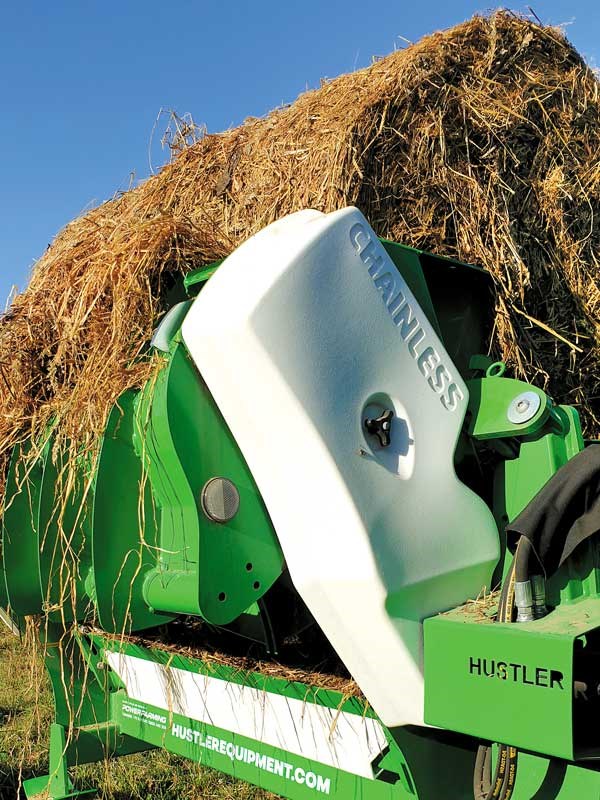 |
|
The drive is well protected from feed wrapping around it and mud from the tyres
|
As balers become more capacious, resulting in bales becoming heavier, there is a growing need for a stronger, more powerful drive. On the LX104, the drive unit has been beefed up with a 40% increase in drive capacity.
Another nifty feature is a cut out in the headstock, with a sticker that shows an indication of where the cradle should be set for the start of feeding with both round bales and square bales. This allows the drive rollers to be started and feeding to commence without the risk of flipping the bale straight off.
Hitching options
Another feature I’m a big fan of is the loader/telehandler hitch mounted option. This allows for feeding over the fence, into a mixer wagon, or feeding different types of feeds such a straw to cattle in barns when you don’t want to run it through the mixer wagon. Being able to get the feeder higher makes feeding into cattle rings and over fence lines in winter or in crop paddocks a doddle. An additional 400mm feed shoot, if feeding into bins or over fences, would be a welcome addition.
Summary
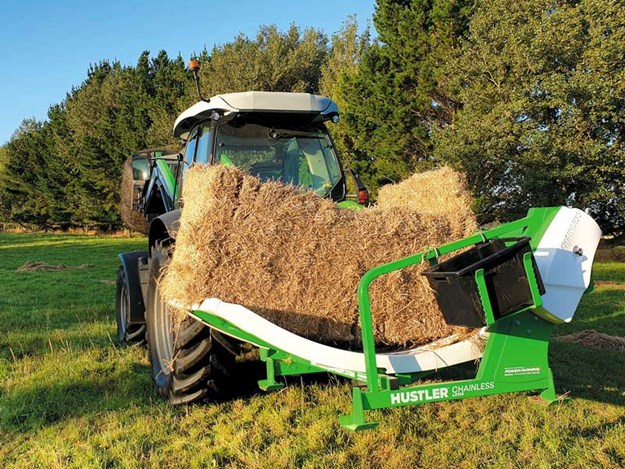 |
|
The chainless really comes into its own when feeding squares
|
It has taken me a while to get to the answer of the last question; is a Chainless feeder worth the price premium?
I’m part Scottish, so I think everything is too expensive. Arguably, bale feeders are quite expensive for what they are. I will concede however that there is an intricate amount of engineering that goes into them.
As you may well be aware from driving around the countryside, bales literally do come in all shapes and sizes. So having one machine from which to feed out all of them is a major bonus.
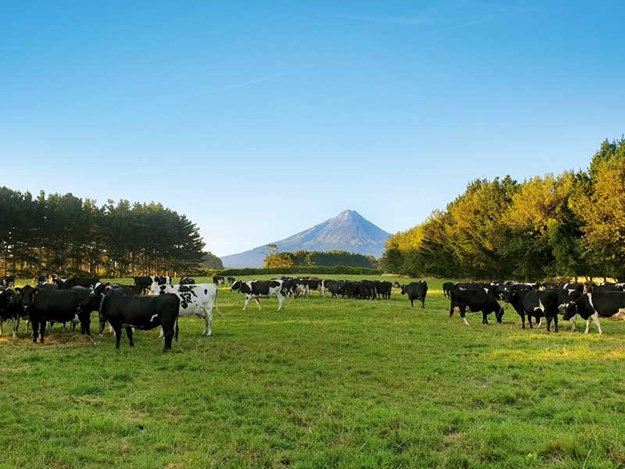 |
|
The cattle seem pretty happy with the result, which at the end of the day is all that really matters
|
If you feed rounds and only one square bale per year, you should buy a Chainless. They’re unrivalled in their ability to feed square bales. It’s uncanny how the teasing rollers feed rounds and can take single biscuits off a square bale.
Now I know I bandy the term ‘glorious’ around a bit (or so I’m told), but the way it flicks those biscuits off is strangely satisfying to watch (or maybe I’m just weird - either way, you decide).
Hustler LX104 specifciations
| Bale size round: | 4’ X 4’ – 6’ X 4’ |
| Bale size square: | All sizes. Over 6’ long requires optional platform extension |
| Weight Capacity: | 1000kg |
| Bale capacity: | 1 bale |
| Unit weight: | 640kg |
| Tractor size: | 80hp + |
| Hydraulics required: | 2 x double-acting, 30-60 litres/min, 2250-3000 psi |
| Loading: | Integrated self-loading system |
| Size (L x W x H): | 1935 x 2648 x 1271 mm |
Find more hay tools for sale in NZ
Keep up to date in the industry by signing up to Farm Trader's free newsletter or liking us on Facebook











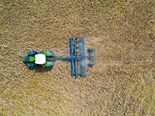
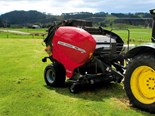
.jpg)

